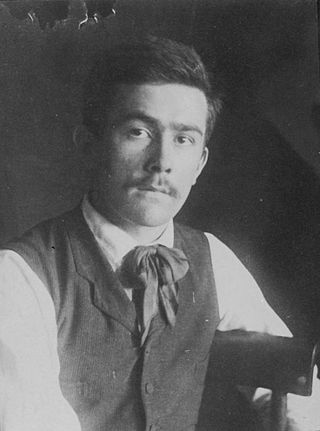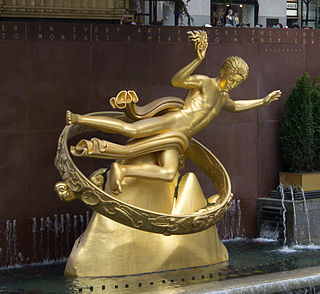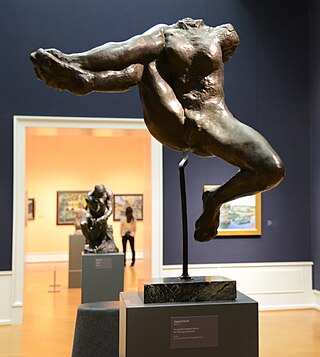| Standing Woman | |
|---|---|
 | |
| Artist | Gaston Lachaise |
| Year | model 1928-30, cast 1980 |
| Type | Bronze |
| Dimensions | 224.2 cm× 113.7 cm× 64.5 cm(88+1⁄4 in× 44+3⁄4 in× 25+3⁄8 in) |
| Location | Los Angeles, United States |
| Owner | University of California, Los Angeles |
Standing Woman is a heroic bronze statue of a confident, robust nude woman by Gaston Lachaise that was modeled in 1928-30 and first cast in bronze in 1933. [1]
Lachaise created the full-scale model for statue and cast it in plaster in 1928-30; inscribed the plaster model with a copyright date in October 1932; and immediately sent it to Munich to be cast in bronze by Preissmann Bauer & Co., a foundry known for its inexpensive yet exceptionally fine bronze casting. The bronze was evidently cast in 1933 but not completed due to Lachaise's chronic failure to pay his foundry bills. It was returned to him in April 1934 and chased and finished by him a month later. That first cast, exhibited in his 1935 retrospective at the Museum of Modern Art, was donated to that museum in 1948. [2] Standing Woman is now one of Lachaise's most acclaimed sculptures as well as an icon of American Art.
There are eight other bronze casts of Standing Woman. The second bronze was issued by Lachaise's widow, Isabel Dutaud Lachaise, and sold in 1957 to the Brooklyn Museum. [3] An edition of six numbered bronze casts authorized by the Lachaise Foundation was produced in 1980-2000. The first five were acquired by the following: the Franklin D. Murphy Sculpture Garden (1/6, cast 1980); [4] the Milwaukee Art Museum (2/6, 1980; [5] the Hirshhorn Museum and Sculpture Garden (3/6, cast 1981); [6] a private collector (4/6, cast 1993; resold in 2018); [7] and another private collector (5/6, cast 1995). The sixth cast, produced in 2000, is owned by the Lachaise Foundation, New York, and is on loan to the Portland Art Museum. Finally, an artist's proof was issued by the Lachaise Foundation in 2007, and is on loan to the Tuileries Garden. [8] All but the cast owned by the Museum of Modern Art were made at the Modern Art Foundry, Queens, New York.
Lachaise envisioned Standing Woman as an archetypal figure to be paired with an heroic statue of a muscular male nude, Man, which he also created in 1928-30, then somewhat revised in 1934. [9] (The first bronze of Man was cast bronze in 1938, and is owned by the Chrysler Museum of Art.) [10] Both Standing Woman and Man express his optimistic view of America's tremendous promise as a place for healthy personal expansion and self-expression. At an early stage of work on the two models, Lachaise described his intentions: “I am working at present at a large standing figure, a woman, on earth ...—vigorously and gloriously for all her share of what is good...—I will...start the figure of ‘Man’ also on earth, for all that is gloriously good to live and go through.” [11] The latent potential of his deliberately constructed, ideal Woman is conveyed by her commanding yet relaxed stance (a mirror-image of the Man's), her extraordinarily formidable yet voluptuous torso, her proud, self-referential gestures, and her straightforward, outward gaze. Lachaise staunchly believed that his figurative sculptures, such as this extraordinary exemplar, would have a “healthful effect” on the viewer. [12]















